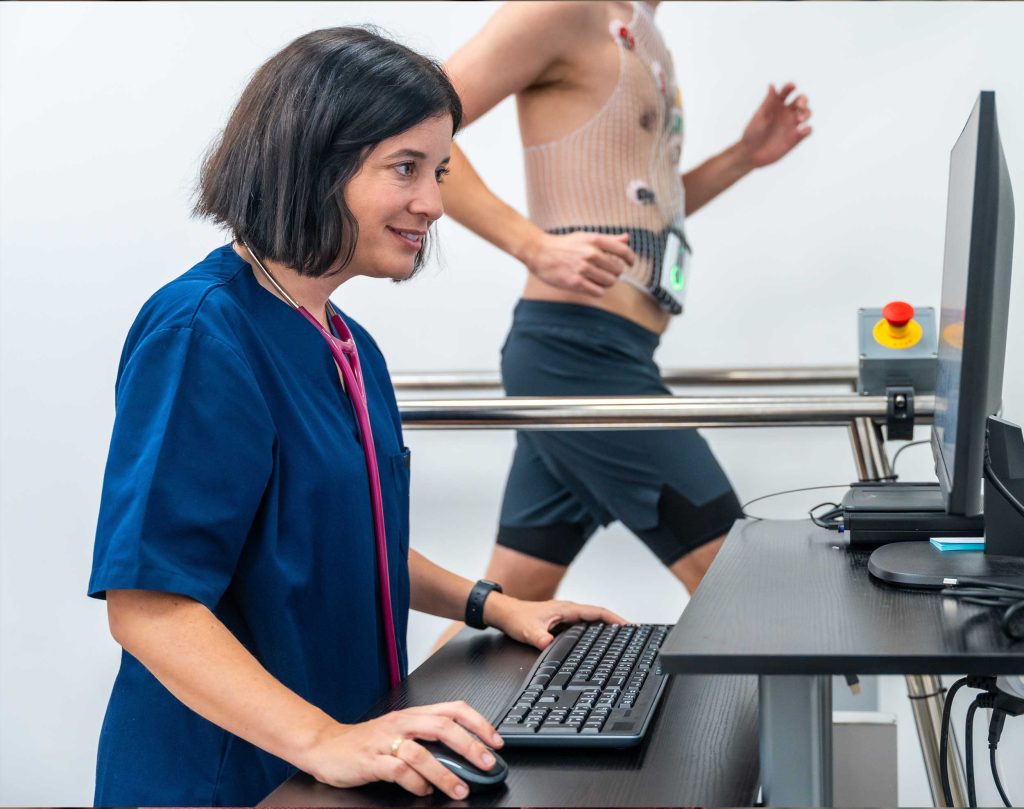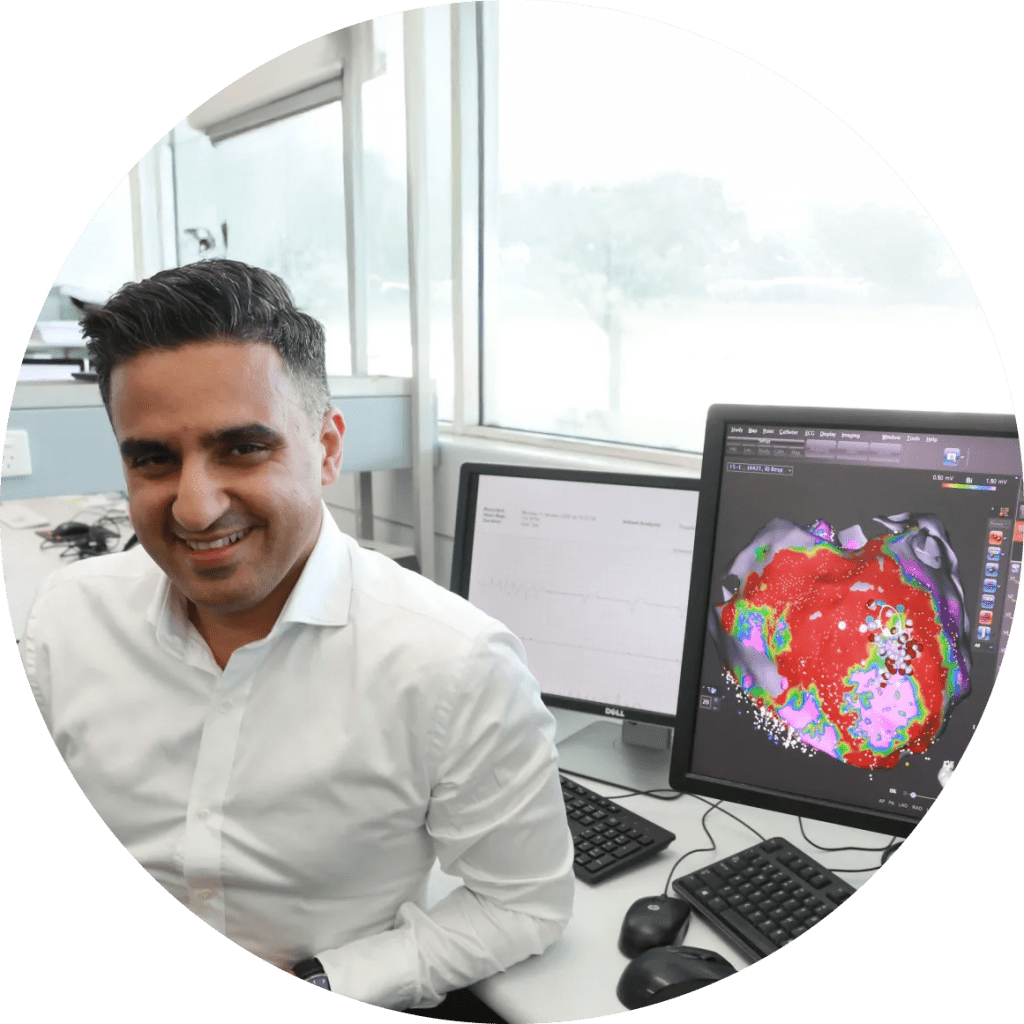Exercise Stress Testing
Evaluating heart function when it matters most — under physical stress
Some heart conditions only become apparent when the cardiovascular system is under pressure. Exercise stress testing is a widely used diagnostic tool that evaluates how your heart performs during physical exertion. It helps identify conditions such as coronary artery disease, rhythm disturbances, and exercise intolerance that may not be evident at rest.
At his Sydney-based practice, A/Prof Saurabh Kumar offers a comprehensive range of stress testing services tailored to each patient’s clinical background and activity level. As a Cardiologist and Interventional Electrophysiologist, he combines functional assessments with advanced imaging and rhythm evaluation to deliver accurate, personalised care.
When Is Exercise Stress Testing Recommended?
Exercise testing is commonly performed to investigate symptoms, assess cardiovascular fitness, or guide treatment decisions. Common indications include:
Chest pain evaluation
Exercise intolerance or unexplained fatigue
Suspected exertional arrhythmias
Monitoring in patients with known coronary artery disease
Pre-operative or sports clearance

Types of Exercise Stress Testing Offered
Treadmill ECG Stress Testing
This is the most common type of stress test. You will walk on a treadmill at gradually increasing speeds and inclines while your heart rate, rhythm, and blood pressure are monitored. The test continues until you reach a target heart rate, experience symptoms, or develop changes in your ECG.
It is a valuable tool for:
- Identifying ischaemia in patients with chest pain
- Diagnosing exertional arrhythmias
- Measuring fitness and exercise tolerance
- Monitoring the effectiveness of treatment for known coronary artery disease
Exercise Stress Echocardiography (Stress Echo)
This combines exercise testing with cardiac ultrasound. Images of the heart are taken at rest and immediately after exercise to assess how well the heart muscle contracts under stress. This test offers increased accuracy in detecting ischaemia compared to ECG stress testing alone.
It is particularly useful when:
- The baseline ECG is abnormal
- A more sensitive assessment of blood flow or wall motion is needed
- A non-invasive alternative to coronary angiography is preferred
Functional Capacity and Symptom Evaluation
What the Test Can Reveal
Ischaemia Detection
Exercise-Induced Arrhythmias
Some patients develop abnormal heart rhythms only during exercise or in the immediate recovery phase. These can range from premature beats to more serious tachycardias. Stress testing allows real-time rhythm analysis under physical stress, helping to determine whether symptoms such as palpitations, dizziness, or syncope are of cardiac origin.
Autonomic And Blood Pressure Response
Exercise Capacity and Recovery
A Valuable Tool for Prevention and Performance
In addition to its diagnostic role, exercise stress testing is often used in preventive cardiology and athlete screening. Individuals at risk of heart disease, including those with diabetes, high cholesterol, or a family history of early heart disease, may benefit from periodic stress testing to track changes over time.
It is also commonly used in pre-participation screening for athletes and active individuals—particularly those with symptoms or a family history of sudden cardiac death. Early identification of conditions such as hypertrophic cardiomyopathy or exercise-induced arrhythmias can help prevent life-threatening events during sport or training.
For post-intervention patients, such as those who have undergone angioplasty, stenting, or ablation, stress testing plays an important role in monitoring recovery, fine-tuning treatment, and confirming that the heart is responding as expected.


Take Control of Your Heart Health Today.
A/Prof Saurabh Kumar brings over 15+ years of clinical expertise to the care of patients with heart rhythm disorders and general cardiac conditions. He is widely regarded within the Australian cardiology community and internationally for his depth of knowledge, collaborative style, and commitment to patient-centred care.
He holds dual roles as a Staff Specialist Cardiologist and Cardiac Electrophysiologist at Westmead Hospital and Clinical Associate Professor of Medicine at the University of Sydney. He currently serves as the Program Director for Ventricular Arrhythmias and Sudden Cardiac Death at Westmead Hospital and is the Translational Electrophysiology Lead at the Westmead Applied Research Centre, University of Sydney.